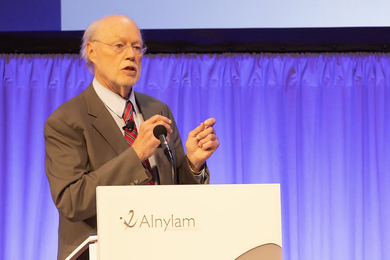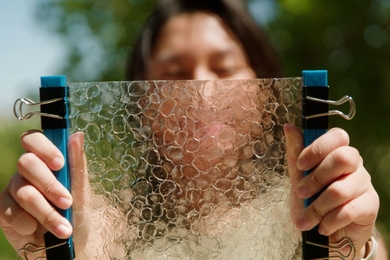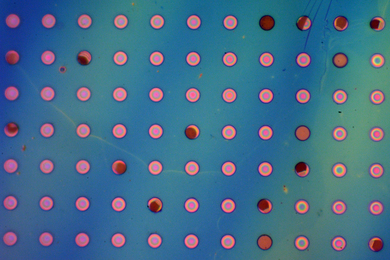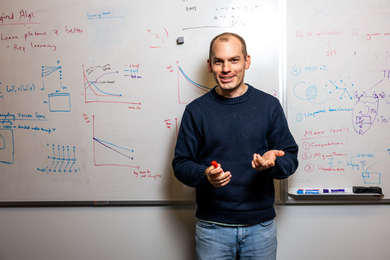Gerardo Jose la O' left his hometown of Bacolod City in the Philippines almost 10 years ago to attend Berkeley and then graduate school at MIT. Visits home consisted of eating fresh seafood and sweet pastries called boat tarts and lounging on the white sand beaches where he swam, snorkeled and scuba dived as a youth.
Even before he left for college, la O' (known as GJ to his friends) had noticed something about the coral reefs that were as familiar to him as his own room: They were getting harder to find. You had to swim farther out, braving strong currents, to find the reefs and their 1,000-plus species of spectacularly colored fish.
La O' wasn't the only one who had noticed a change. In Sagay City, a major fishing area bounded by the Visayan Sea, three decades of dynamite fishing had decimated coral formations. The habitat for one of the highest concentrations of biodiversity in the world was being destroyed. Fish were becoming scarce.
When la O' steps off a plane in Manila these days, it's not just an escape from New England weather. He's on a mission to save the coral.
With fellowships from MIT's Graduate Student Council and the MIT Public Service Center, la O' and MIT students Emzo de los Santos, a sophomore studying biological engineering, Martin M. Lorilla, a Sloan management student, and former MIT Department of Urban Studies and Planning Fellow Illac Diaz launched First-Step Coral. The students coupled their science and engineering skills with a new technology to promote a low-cost, environmentally friendly way to regrow the Philippine coral reefs.
First-Step Coral recently won a $7,500 award in the MIT IDEAS competition and is one of eight semifinalists in the 2007 MIT $100K Entrepreneurship Competition "development track" for advancing low-income communities in developing countries. Winners will be announced May 16 at an awards ceremony at 7 p.m. in Kresge Auditorium.
"I've seen the natural ecosystem get worse and worse. It's overused, overexploited," la O' said. "The fishermen throw sticks of dynamite into the water and the sonic waves cause the fish to die and make them easier to catch. It also shatters the coral and causes it to slowly die off. It's akin to carving a hole in the center of the Amazon and denuding it, but the coral reefs are less visible because they're underwater."
The coral reefs help provide more than 60 percent of the animal protein consumed by the Philippines' population of 80 million. The declining fishing industry then puts more pressures on the land, which must support more agriculture as people move inland in search of a new food supply.
While at MIT, la O' heard about an MIT alumnus, Thomas J. Goreau, who had invented a way to help renew coral reefs. La O's immediate reaction was, "I know of a place in the Philippines that could really benefit from this technology."
Goreau had started the Cambridge, Mass.-based Global Coral Reef Alliance (GCRA), a small nonprofit dedicated to growing, protecting and managing coral reefs. La O' and others joined GCRA's volunteer scientists, divers and environmentalists committed to coral reef preservation worldwide to find a way to help the Philippines, ranked one of the worst coral "hot spots" in the world by Science magazine.
Goreau's invention, called Biorock, uses an electrochemical process to deposit calcium carbonate, also known as white limestone, onto a common iron building material called rebar. Rebars are used for construction supports and can be fashioned into any shape. The students make it into curved structures that resemble small Quonset huts. After the calcium is deposited on the black metal, it turns white, and clumps of living coral that the volunteers tie to the metal begin to grow and attach themselves to the framework. In trials in the Pacific islands, the Indian Ocean and the Caribbean, corals attached to Biorock grow three to five times faster than native coral and have an increased survival rate.
The MIT students' innovation is to power the electrochemical process with wind turbines, tidal power and solar panels. During a trip to the Philippines in January, the First-Step Coral team installed 500-watt solar panels donated by Shell and Sunpower to power Biorock in the Carbin and Molocaboc islands in the Sagay Marine Reserve. The team plans to study the effect of the cyclical nature of the renewable sources on the growth and development of the coral.
In addition, the students presented information on the project to local schools and centers--reaching more than 500 schoolchildren and community leaders--and created a partnership with a new marine museum to get schools involved in monitoring the progress of the reefs. They also hope to stop children from breaking off bits of living coral to sell to tourists. "You really need a strong community partner for the long-term success of a project like this," la O' said.
La O's two-week stints at home are much busier these days. "I used to go home almost as a tourist. This time, I'm much more fulfilled, more in touch with the community. Every time I go home now, I have something to check into," he said. He hopes that the reef will make such a dramatic turnaround that it will become a destination for divers and snorkelers, and out-of-work fishermen can drive water taxis to bring eco-tourists to the best sites.
La O', who is studying materials science, plans to pursue a career in high-temperature fuel cells and electrochemical energy systems that could one day be used in cars and stationary power systems, but "that's in the future. Now we've got a more pressing need--the marine ecosystem. It's great to apply my knowledge to something with a positive impact. And who else gets to do a project where you must spend time on beaches in nice coral reef areas?"
A version of this article appeared in MIT Tech Talk on May 9, 2007 (download PDF).








